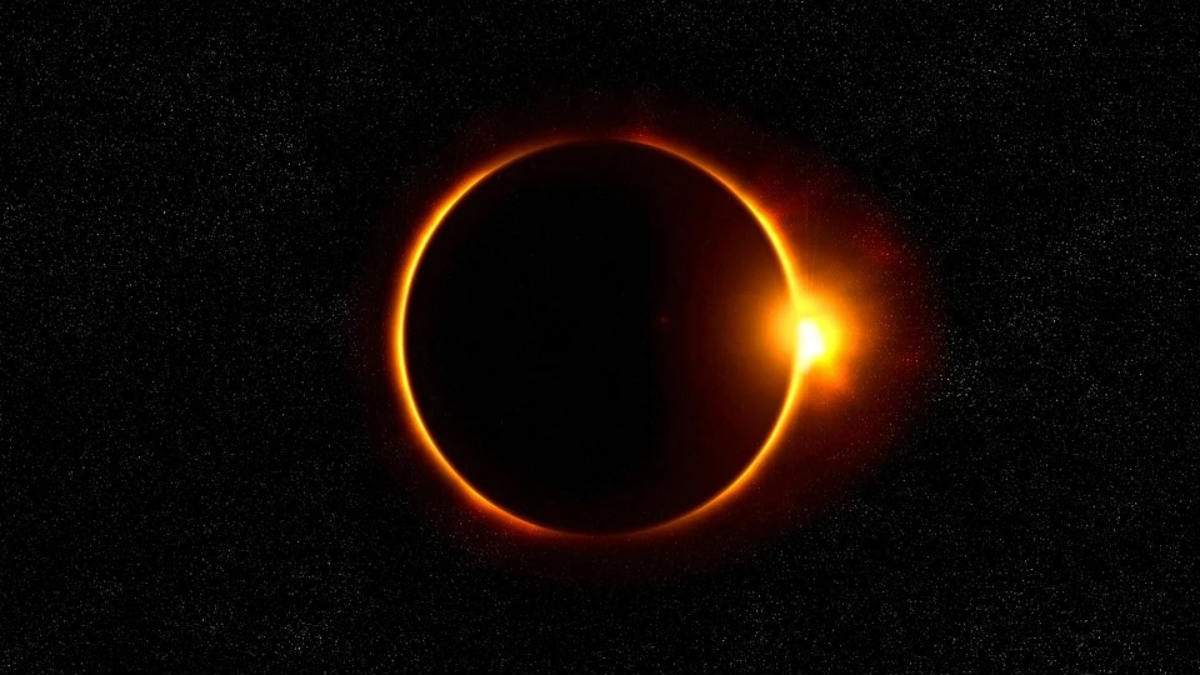The solar eclipse today, which is not just the last of the year but also for the decade, began at around 8:00pm today and could be seen from different places in India. The solar eclipse is also called “Ring of Fire” or “Surya Grahan” was first became visible from Riyadh, Saudi Arabia as a partial eclipse.
In India, the partial eclipse could be seen from parts of Kerala, Tamil Nadu, Delhi, Maharashtra, and Karnataka.
At around 9:00 am, the annular solar eclipse today will be visible and the maximum eclipse would be visible at 10:45-10:50 am. However, the last of the full eclipse could be seen at 12:30 pm at the Pacific Ocean’s Guam. In India, people will be able to witness the complete Ring of Fire for just over 3 minutes. In Total there are 3 types of Solar Eclipse- Total, Partial, and Annular.

A solar eclipse occurs when the moon aligns in such a way that comes in between the Sun and the Earth, obscuring the view of sun totally or partially for Earthlings (People living on earth).
An Annular solar eclipse occurs when the moon’s diameter is smaller than that of the sun, blocking most of its light. This makes the Sun look like a Ring of Fire.
Generally, there are 2 Solar Eclipse in a year, however, there have been rare occasions where there have been 7 Solar Eclipses in a single year. A fun fact: If the Moon were to be in a perfect circular orbit, a little nearer to the Earth, and in the same orbital plane, people would have witnessed a Total Solar Eclipse every new moon.
Depending on the geographical position, the partial solar eclipse will be seen from different parts of India. Following the traditions, many temples across India such as Sabarimala Temple, Kerala, Tirumala Tirupati Balaji Temple, Andhra Pradesh, and the Madurai’s Meenakshi Temple will be closed and will only reopen after the purification rituals.
In various faiths and cultures, it is believed that during an eclipse the sun emits radiations which are considered negative, thus, the temples are closed in order to prevent the radiations reach the deities in the temples.
Before the solar eclipse, astronomers issued dos and don’ts for people who want to see the eclipse. Sky watchers have been advised to use safe equipment and suitable technique to watch the celestial event as the Ultraviolet (UV) and Infrared rays emitted by the Sun can damage the eye.
MP Birla Planetarium, Director, Debiprosad Duari said “one should not look at the Sun directly for even a little period without proper protection. Even when 99 per cent of the surface of the Sun is covered by the moon during partial eclipse, the remaining light is still intense enough to damage the eye”.
He added “proper solar filters with certified appropriate optical density against radiation which are safe to the eyes should be used in front optical devices and the naked eye”.
As per the experts, the best way one can witness the Solar Eclipse is through a pinhole camera or a telescopic projection placed on a stable surface. Apart from India, and Saudi Arabia, the eclipse can also be seen from Oman, UAE (United Arab Emirates), Malaysia, Guam, Qatar, Sri Lanka, Singapore, Northern Mariana Islands, and Malaysia. Various YouTube channels are live streaming the Solar Eclipse from different parts of the world like CosmoSapiens, Canary Islands based Slooh Observatory, and Sri Lanka’s Tharulowa Digital.
Ring of fire!
— Sohail Khanzada (@SoheilKhanzada) December 26, 2019
Full solar eclipse, being witnessed only after 1990.
This is spectacular.
#solareclipse2019 #SolarEclipse pic.twitter.com/9Q8q0Ew1Ds
SubhanAllah
— Yurnero Kardel (@YurneroK) December 26, 2019
This is beautiful! What a beautiful gift to end the year. #SolarEclipse pic.twitter.com/elwMVyFCGQ
so happy to have seen the Eclipse! ? #SolarEclipse pic.twitter.com/DtH7ZloXIi
— Nikitha (@nikithaneel_) December 26, 2019


